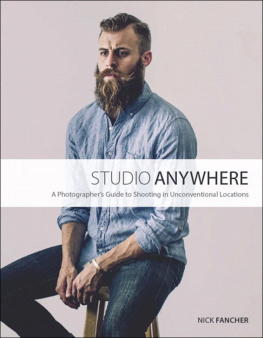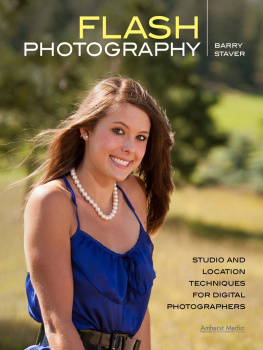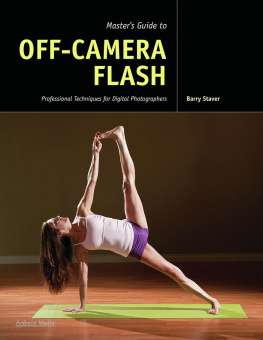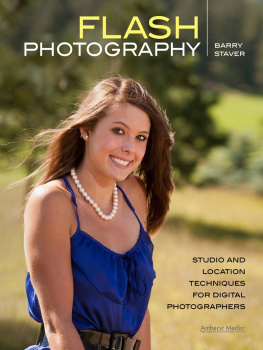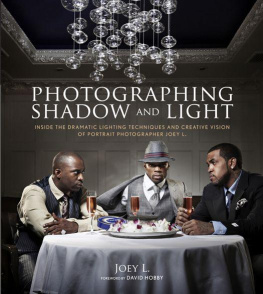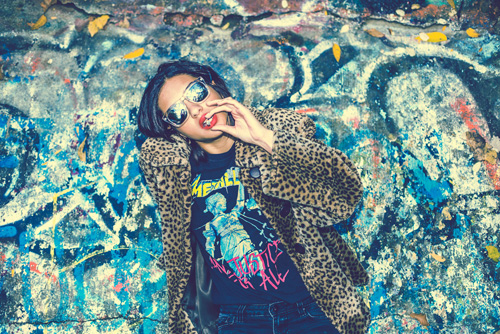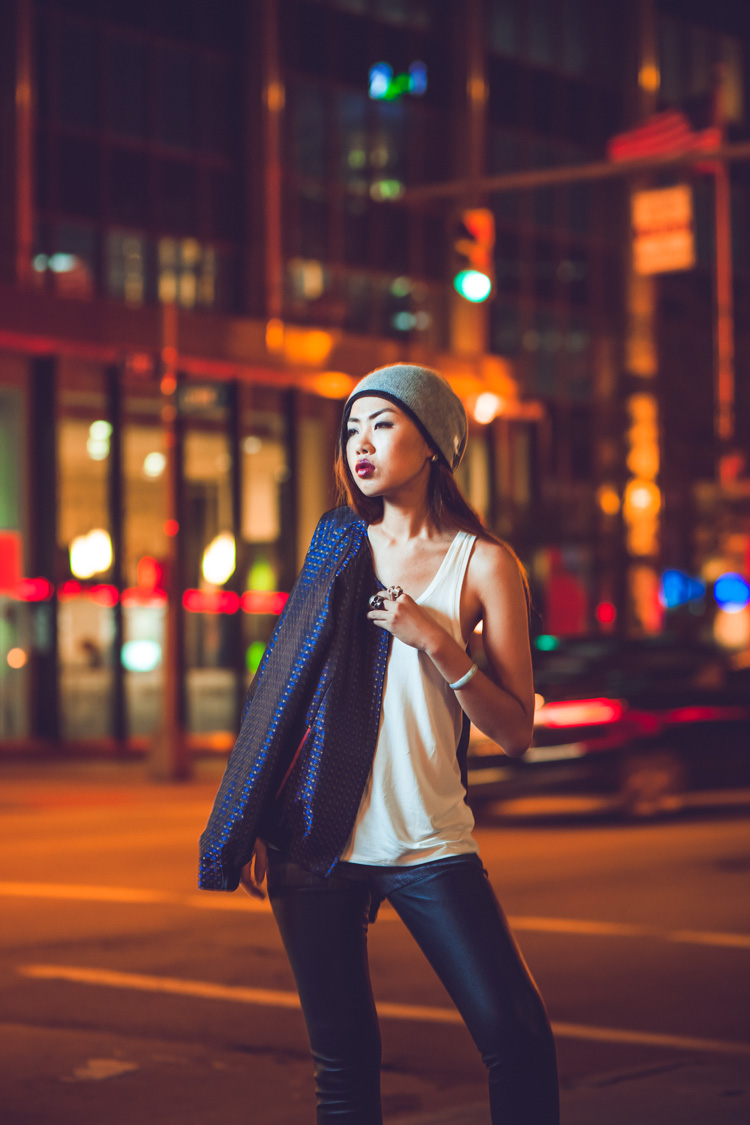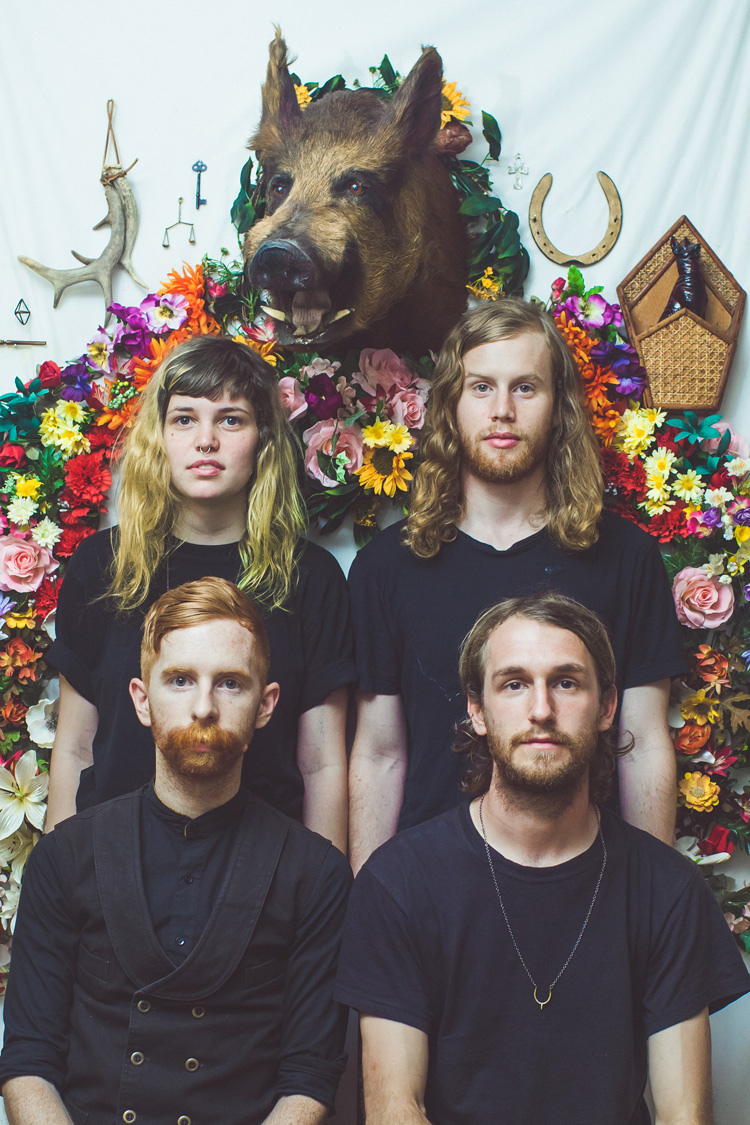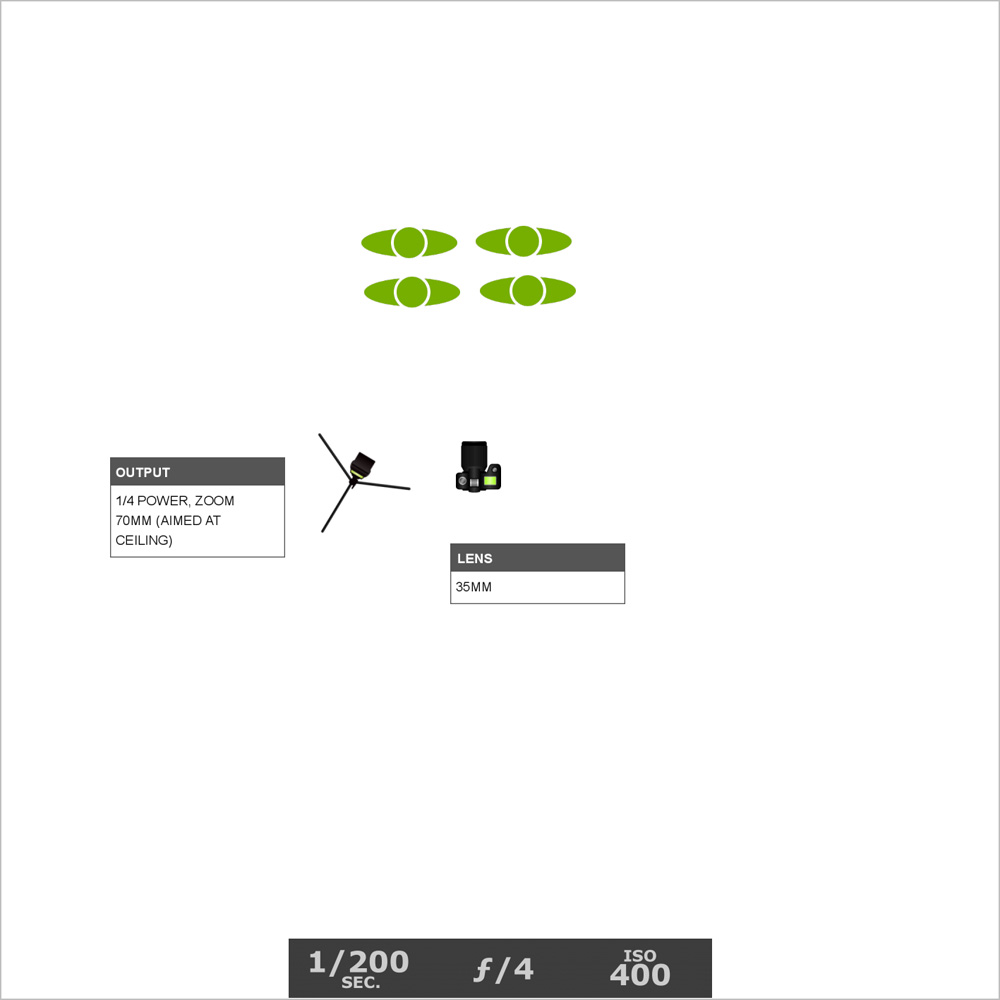Run and Gun Lighting Resource
One-Light Solutions for Commercial and Portrait Photographers
Nick Fancher

Dedication
This book is dedicated to my wife, Beth. I dont even mean this in a strictly sappy way, but I literally dont know where Id be in life without you. You have helped shape me into who I am now, including creatively. You encourage me as well as speak the truth to me. Thank you.
Acknowledgments
Thank you to Ted at Peachpit for all his help in producing this book. Id also like to thank Rick Kocks, my high school teacher, who fanned this spark of photography into a flame.
About the Author
Nick Fancher is a Columbus, Ohiobased portrait and commerce photographer. He graduated from The Ohio State University with a BFA in fine art photography in 2005. His clients have included JackThreads, ESPN Magazine, The Ohio State University, CVS, and Getty. He adores good coffee, music, and the film work of Charlie Kaufman.
Photo credit: Nick Fancher
Introduction
So you finally picked up a flash. Congratulations! One of the most exciting moments for any photographer is that first time you trigger an off-camera flash. This feeling of power courses through your veins. You immediately start thinking about all the places your tiny, battery-powered light will fit. The possibilities are endless. Once you have that strobe, you are no longer a slave to your environment. Too dark? Too sunny? Harsh tungsten light? Every problematic scenario can now be resolved with the use of strobes.
When most photographers pull their strobe out of their camera bag, its typically because its a last resort. And they almost always throw it on their camera, add a dome-light diffuser, and call it a day. In doing this, they are missing out on a whole world of possibilities. My hope is that this book will demystify off-camera flash use by explaining a small bit of its science as well as explaining your options when it comes to choosing and modifying your strobe.
Lighting Scenarios
The following lighting scenarios are meant to serve as a kind of field guide for reference when youre practicing off-camera flash use on your own. While your scenarios may not perfectly reflect the ones I shot in, the camera and light settings should be very similar. As you use your strobes, the most important thing to keep in mind is to not forget about your subject. Keep the dialogue going. Also, if you are having a hard time troubleshooting your light setup, let it go and shoot it with available light. You only have so much quality time before your subject is wishing the shoot was over.
Strobes: A (Very) Quick Breakdown
Here is about all the science I am going to go into: strobe light happens in short bursts whereas all other light (ambient light) is constant. Because of this, you control ambient light with your shutter speed and you control the strobe with your aperture, while the ISO affects everything. (When it comes to ISO, my rule of thumb is to keep it as low as you can get away with at all times.) I typically keep my ISO in the 200640 range so that my Speedlites can be at a lower output (such as 1/8 power) to allow for a faster refresh time.
Now imagine that you are holding your brand new Speedlite in your hands. Just like when you first picked up a DSLR camera, you may feel a bit overwhelmed. Dont be. You have two options. You can shoot in Evaluative Through the Lens mode (ETTL), which basically means your camera will output what it determines is the appropriate amount of light based on your meter reading. Or, you can shoot in manual mode, where you set the output of the flash. I opt for this latter option, since my cameras best guess is rarely correct. Its not unlike shooting with your camera set to automatic versus manual mode.
Light Modifiers
When it comes to shaping light, many options are available. These are called light modifiers. Light modifiers are things such as umbrellas, snoots, grids, barn doors, softboxes, and gels. But like with anything in photography, you dont need to concern yourself with most of the options. Once you know what everything does, you can make an educated decision about what you actually want to use.
All I use when it comes to modifiers is an umbrella, a grid, and, sometimes, colored gels. The rest of the time I shape my light by its distance to the subject and by zooming the flash head in or out. This allows me to work more quickly and often without the need of an assistant. Not to mention, when you are shooting outside, the light modifiers you add to your flash stand will turn it into a sailboat if the wind picks up.
Portrait: Bounce Light
Many photographers who may be intimidated by the idea of using an off-camera flash still appreciate the bounce light portrait. They know that simply throwing a Speedlite on top of the camera and aiming the head at a white ceiling or nearby wall as a bounce will produce a nice, soft, even light on the subject. This is a gateway drug to the strobist world.
This portrait is of the band Saintseneca, which hired me to take a picture of their concept. They wanted to do an homage to The Beatles Sgt. Pepper album cover. They actually constructed the backdrop themselves. All I needed to do was show up and shoot the pic. The hitch was that the backdrop wasnt very large and it was set up in their small apartment. This meant that I wasnt able to use an umbrella on my light because of the low ceilings and lack of space. So, you may ask, what is softer than an umbrella and a fraction of the size? A bare bulb Speedlite bounced into a low, white ceiling. The only thing to be aware of when using this technique is to place the flash a bit in front of your subject rather than directly over the head in order to avoid raccoon eyes.
Portrait: Hard Light
I know I just told you that your goal is to get the flash off your camera. But dont underestimate the effectiveness of direct flash. It wraps around your subject like a beauty dish and can be quite flattering. Put your subject against a wall and shoot away. This look is very common in fashion editorials and commercial shoots. Hell, fashion and portrait photographer Terry Richardson has made a career out of it. You dont even need light modifiers. You can shape your light quite effectively by simply zooming your flash in and out.
For a hard light portrait, you can also use an on-camera flash quite effectively as a fill light. If you balance your flash output with the ambient light, it will appear much softer. It often helps to start by taking a shot without a flash to see how dark your shadows are. That way, you can determine what power you need to set for the flash. And since you are shooting out in the light, you arent concerned about lighting the area around the subject; you can zoom your flash head in to 105mm to get the most out of each fire.


